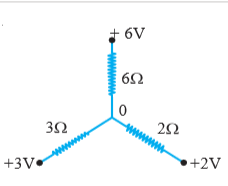What is Krichhoff's junction rule?
Video Solution
|
Answer
Step by step video & image solution for What is Krichhoff's junction rule? by Physics experts to help you in doubts & scoring excellent marks in Class 12 exams.
Updated on:21/07/2023Topper's Solved these Questions
- CURRENT ELECTRICITYBOOK - MODERN PUBLICATIONCHAPTER - CURRENT ELECTRICITYEXERCISE - REVISION EXERCISES (LONG ANSWER QUESTIONS)
10 Videos
- CURRENT ELECTRICITYBOOK - MODERN PUBLICATIONCHAPTER - CURRENT ELECTRICITYEXERCISE - REVISION EXERCISES (NUMERICAL PROBLEMS)
24 Videos
- CURRENT ELECTRICITYBOOK - MODERN PUBLICATIONCHAPTER - CURRENT ELECTRICITYEXERCISE - REVISION EXERCISES (FILL IN THE BLANKS)
10 Videos
- ATOMS BOOK - MODERN PUBLICATIONCHAPTER - ATOMS EXERCISE - Chapter Practice Test
16 Videos
- DUAL NATURE OF RADIATION AND MATTER BOOK - MODERN PUBLICATIONCHAPTER - DUAL NATURE OF RADIATION AND MATTER EXERCISE - CHAPTER PRACTICE TEST
15 Videos
Similar Questions
Knowledge Check
Point out the right statements about the validity of, Kirchhoff's junction rule
Ait is based on conservation of chargeBoutgoing currents add up and are equal to incoming currents at a junction.Cbending or reorienting the wire does not change the validity of Kirchhoff's junction rule.Dall of above.Assertion (A): Kirchhoff's junction rule is applicable for any number of lines meeting at a point in an electrical circuit.
Reason (R): When there is a flow of steady current, then there is no accumulation of charge at the junction.ABoth A and R are true and R is the correct explanation of ABBoth A and R are true but R is NOT the correct explanation of ACA is true but R is falseDA is false and R is trueConsider the following two statement.
(A) Kirchhoff's junction law follows from the conservation of charge.
(B) Krichhoff's loop law follows from the conservation of energy.
Which of the following is correct ?ABoth (A) and (B) are wrongB(A) is correct and (B) is wrongC(A) is wrong and (B) is correctDBoth (A) and (B) are correct

